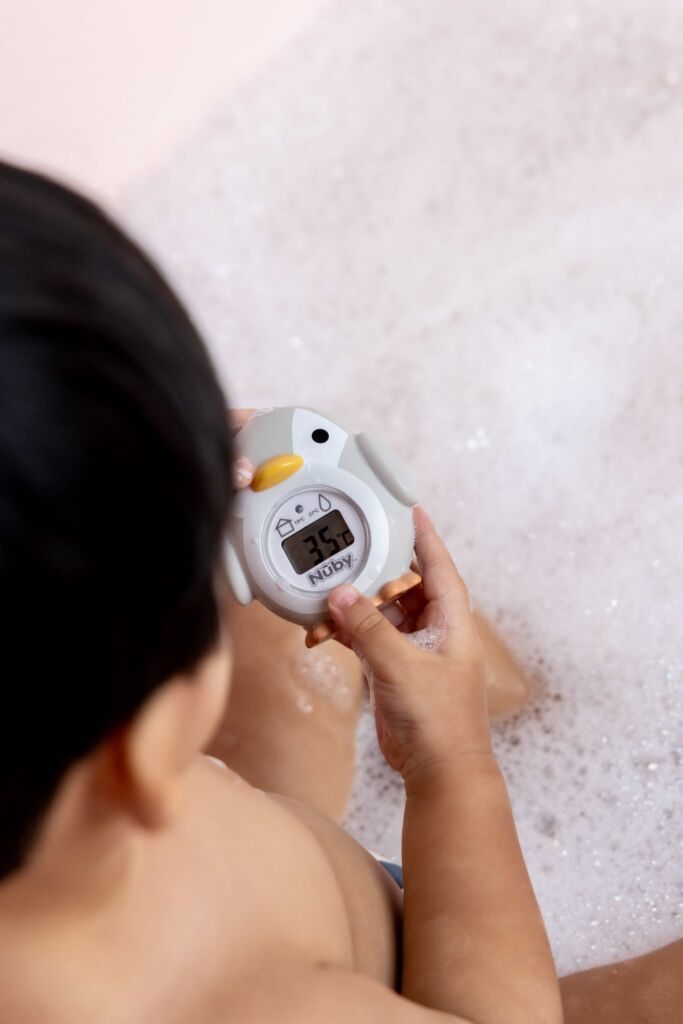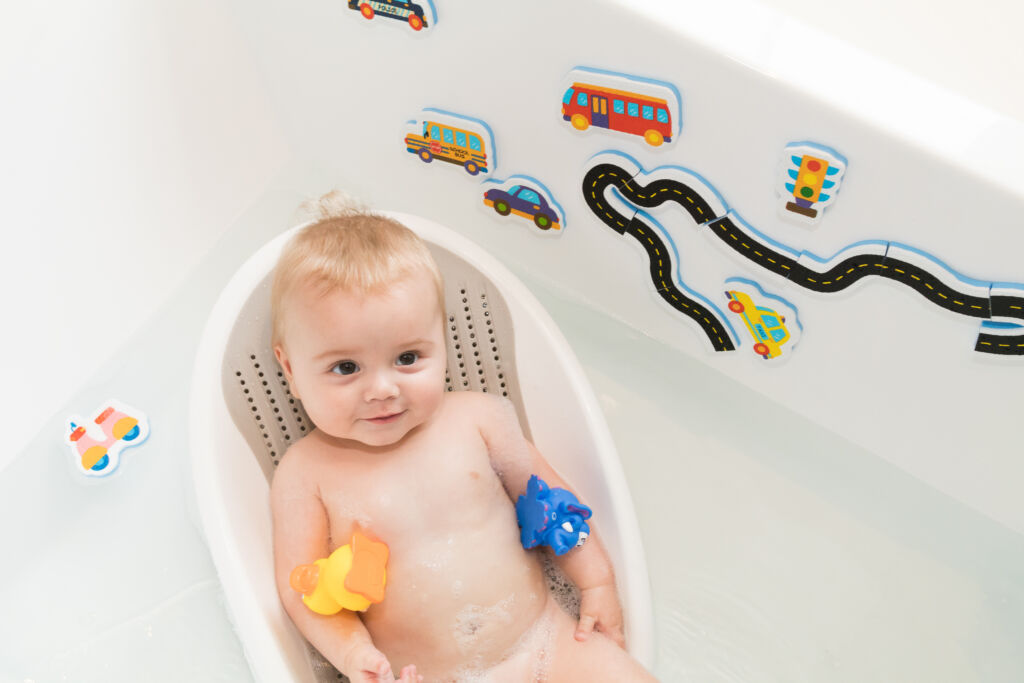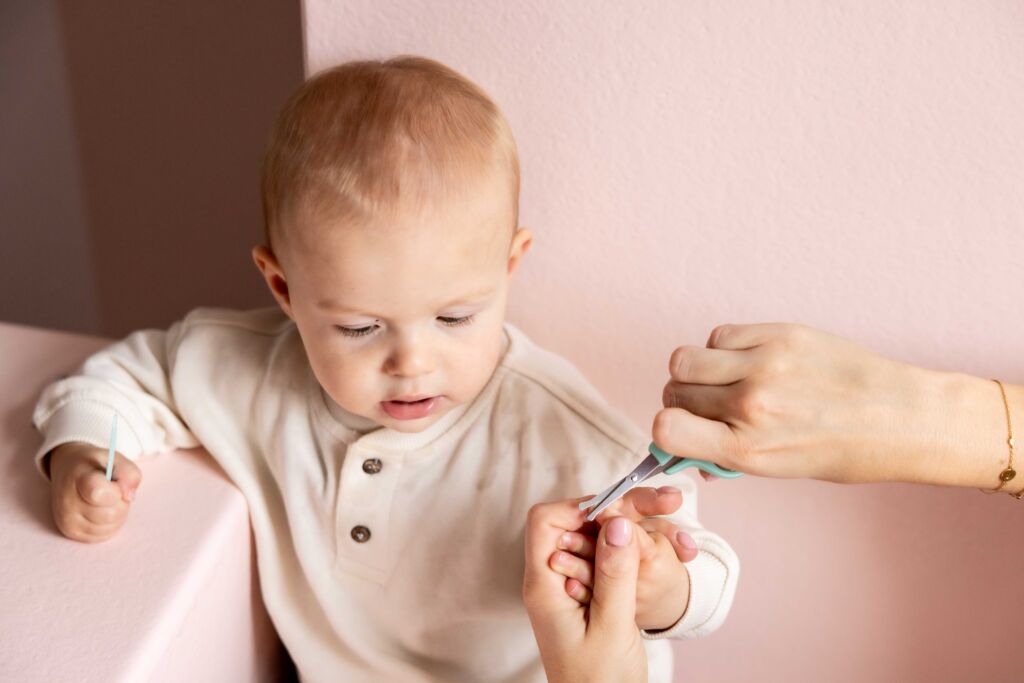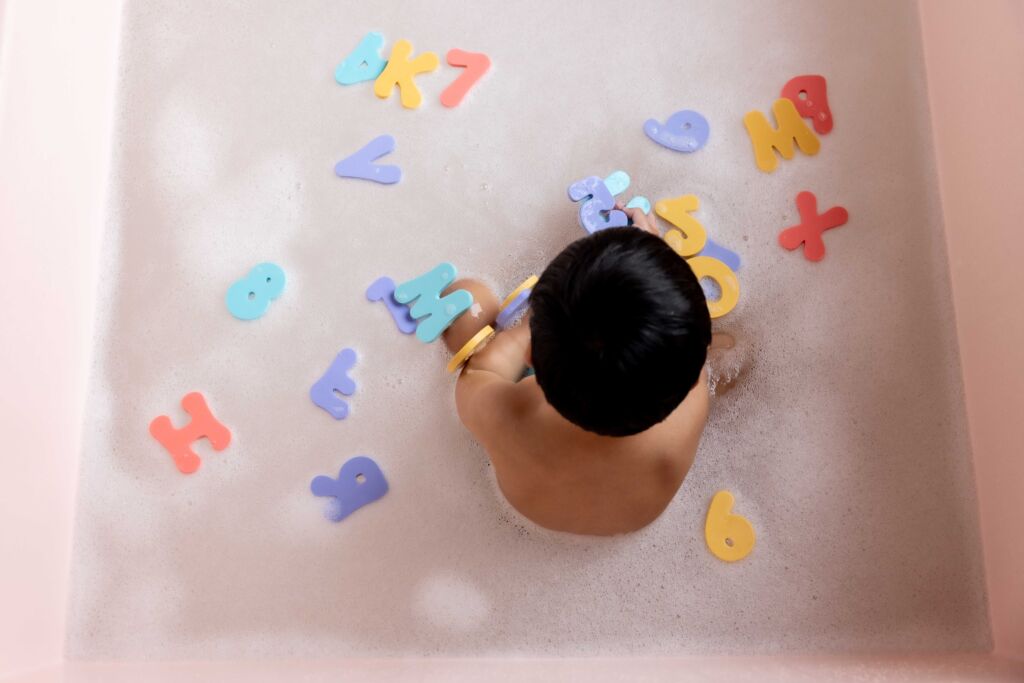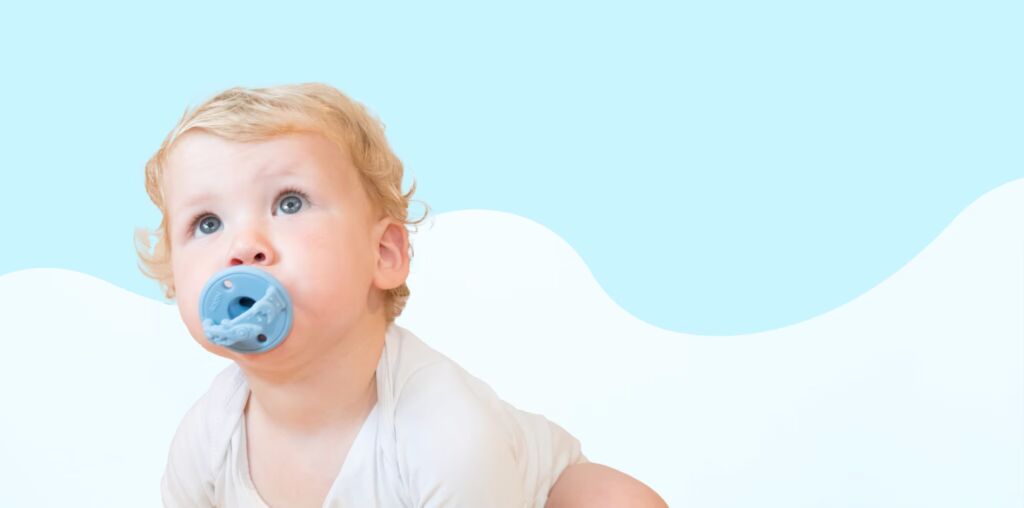How often should you bathe your baby? Many parents ask themselves this question, especially during the first weeks. A warm bath often seems like a nice moment to relax, but is daily bathing actually good for your baby? We also share some tips that might surprise you even with a second child.
It is best not to wash your baby every day, they had told me at the hospital. But every two days is also too much, I noticed after a while, when my daughter's skin started to feel drier. Once or twice a week is a good guideline.
In practice, parents bathe their babies more often. Because it is part of the evening ritual, because it calms babies down, because it helps reduce cramps in the first weeks, etc. But you should limit your bath time quite a bit. What does need to be washed daily are hands and bottom. Washing the rest of the baby's body is sufficient every three, four or five days.
If your little one takes a bath, limit it to about 10 minutes to avoid drying out its skin. Also avoid bath foam or bath salts, as they do more harm than good to the natural and much-needed layer of fat on the skin.

Some practical tips for a ‘splashing’ bath time:
1. Check the water temperature. A hot bath after a long day at work might be relaxing for us, but for a baby, it can quickly become too warm and they can’t communicate when it is. You can test the temperature by dipping your elbow in the water, but if you want to be sure, a bath thermometer is a great tool. A maximum of 37°C is ideal. The Nûby bath thermometer is highly recommended, as it can also be used to measure the temperature in your baby’s room.
2. Keep the bathroom warm. A temperature of 22 to 23°C is perfect. No one likes stepping out of a warm shower into a cold room, and your baby feels the same way. A great tip is to warm up towels or muslin cloths beforehand, so your little one stays cosy while drying off—no more pouty faces!
3. A baby bath in the sink is ideal for the first months. Your back will thank you for working at a comfortable height. A bath seat or bath insert is a must—it keeps your hands free to wash your baby or grab a towel. And by "hands-free", we mean only for reaching nearby items. Never leave your baby alone in the bath, not even for a few seconds.
4. Once your baby can sit up independently, you can move bath time to the big tub. You’ll know when the time is right—when your little one starts splashing so much that water spills over the edge of the baby bath, it’s time for "damage control" in the bigger tub. Colourful anti-slip stickers on the bottom of the bathtub are a great idea at this stage—they help prevent unnecessary slips and unexpected dunking!
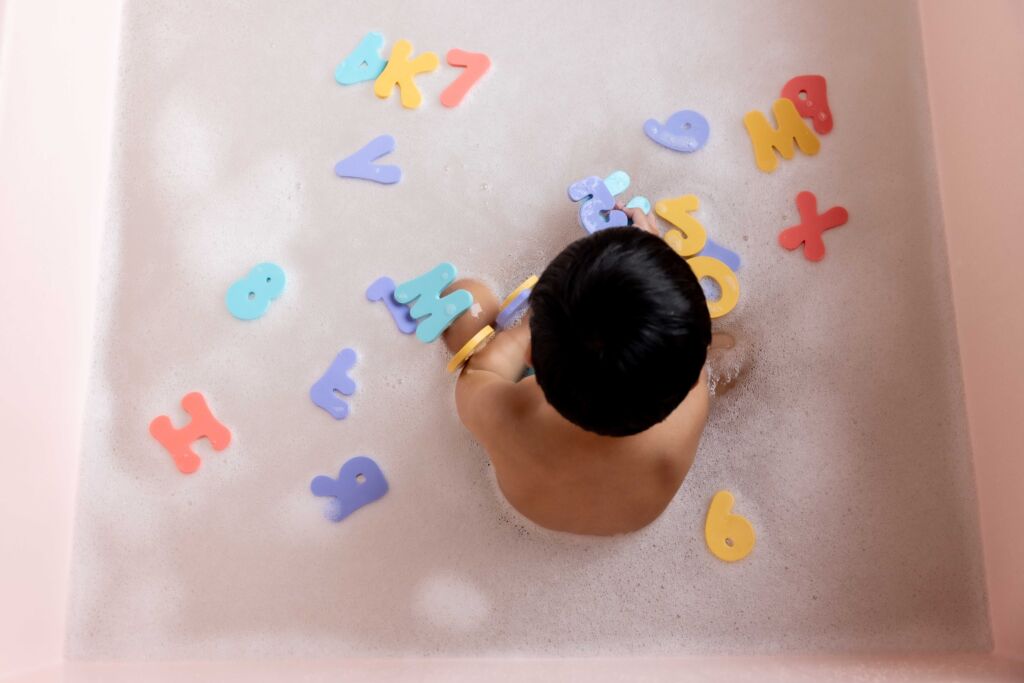
5. Make bath time fun! Adding some playful elements makes the experience even more enjoyable. A great tip is the Nûby bath toy letters and numbers, they’re colourful, soft, and will quickly capture your baby’s interest. Plus, they last for years, becoming a fun learning tool when your little one starts recognizing letters and numbers as a toddler. Another favorite is the floating octopus, a big hit for keeping your baby entertained—perfect for distracting them while you soap them up or rinse out shampoo!

6. Rinsing out shampoo can be tricky. You want to avoid your little one panicking because too much water runs over their face. While a baby still lies relatively flat, once they start sitting up, it becomes more challenging to keep water out of their face while still rinsing thoroughly. The Nûby rinse cup is a handy tool for this—it has a soft edge that helps shield your baby's face as much as possible while making rinsing easier.

7. Choose baby-specific products. This might seem obvious, but it’s important to use products made specifically for babies. These create a nice lather for washing while being gentle on the eyes, preventing irritation. A must-have if you want to avoid bath time becoming a struggle or at least minimize the chances!
8. For dry skin, try showering with mom or dad. If your baby has dry skin, taking a quick shower with a parent can help. It’s less harsh because the skin isn’t soaking in water for too long. At home, we sometimes find that one or two baths a week aren’t enough—especially now that our little one is eating on her own. By the end of mealtime, even when things go smoothly, that spoon always seems to end up in her hair!
If you take your baby into the shower, make sure you have a firm grip on one arm or leg at all times. A baby's body like that really does get slippery.
9. Do you have any breast milk left in the freezer? Pour a little breast milk into the bathtub, just enough until the water seems a little cloudy. Not too much, the aim is obviously for the baby to come out of the bath cleaner than before, not the other way around. Breast milk helps against dry skin, and according to some mums even against skin conditions like eczema.
You can do the same, for example, by putting a spoonful of oatmeal in a flannel, and soaking it in your bath water. And this tip I got from the midwife and we have also tried it here ourselves: add a hearty portion of natural ‘starch’ to your water. Starch contains rice derivatives, and these are good for dry skin. And let's face it, we don't use that starch for many other things anymore. Ironing? Who has time for that these days....
You first read this article on Mamabaas.
